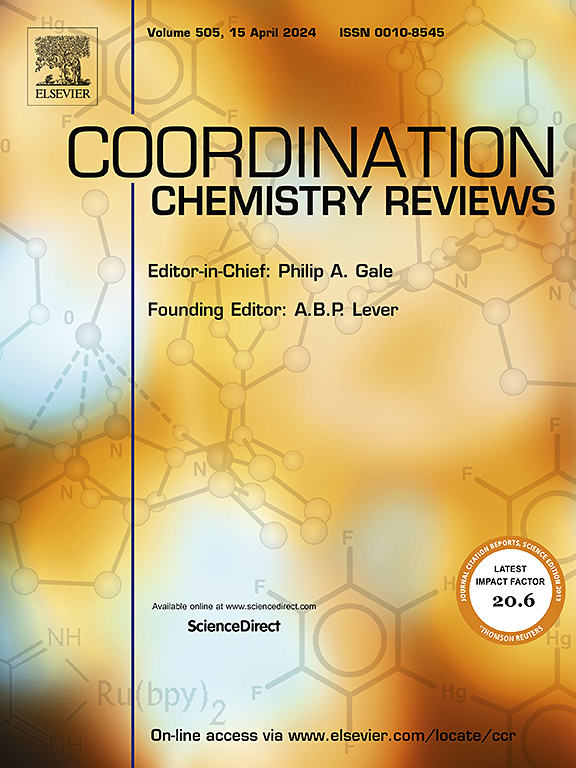Cross-material synergies of carbon nanomaterials, MOFs, and COFs: Innovative approaches for sustainable environmental remediation and resource recovery
IF 20.3
1区 化学
Q1 CHEMISTRY, INORGANIC & NUCLEAR
引用次数: 0
Abstract
Sustainable environmental remediation and resource recovery are critical to addressing pollution, resource depletion, and ecosystem degradation. This review introduces the new concept of cross-material synergies, integrating carbon nanomaterials (CNMs), Metal-Organic Frameworks (MOFs), and Covalent Organic Frameworks (COFs) into multi-functional composite systems. By leveraging their complementary properties, these materials overcome key challenges such as structural instability, poor selectivity, and scalability limitations. Cross-material composites—including MOF@COF hybrids and CNM-MOF integrations—enhance adsorption performance, stability, and reusability compared to their individual components. Our review demonstrate how these hybrid systems improve pollutant removal, catalytic degradation, and resource recovery, aligning with sustainability goals. Their ability to transform waste into valuable materials supports circular economy principles and key Sustainable Development Goals (SDGs), including SDG 6 (Clean Water and Sanitation), SDG 12 (Responsible Consumption and Production), and SDG 13 (Climate Action). Furthermore, the review highlights strategies for optimising material performance, ensuring industrial scalability, and minimising environmental impact through Safe and Sustainable by Design (SSbD) approaches. Unlike previous reviews that focus on individual materials, this work provides a holistic roadmap for designing and deploying cross-material composites for real-world applications. By bridging fundamental research with industrial implementation, these systems present a transformative step toward sustainable material science, with far-reaching implications for environmental remediation and resource recovery. Future research should focus on enhancing synthesis efficiency, ensuring long-term material stability, and addressing economic feasibility for large-scale deployment.
碳纳米材料、MOFs 和 COFs 的跨材料协同作用:可持续环境修复和资源回收的创新方法
本文章由计算机程序翻译,如有差异,请以英文原文为准。
求助全文
约1分钟内获得全文
求助全文
来源期刊

Coordination Chemistry Reviews
化学-无机化学与核化学
CiteScore
34.30
自引率
5.30%
发文量
457
审稿时长
54 days
期刊介绍:
Coordination Chemistry Reviews offers rapid publication of review articles on current and significant topics in coordination chemistry, encompassing organometallic, supramolecular, theoretical, and bioinorganic chemistry. It also covers catalysis, materials chemistry, and metal-organic frameworks from a coordination chemistry perspective. Reviews summarize recent developments or discuss specific techniques, welcoming contributions from both established and emerging researchers.
The journal releases special issues on timely subjects, including those featuring contributions from specific regions or conferences. Occasional full-length book articles are also featured. Additionally, special volumes cover annual reviews of main group chemistry, transition metal group chemistry, and organometallic chemistry. These comprehensive reviews are vital resources for those engaged in coordination chemistry, further establishing Coordination Chemistry Reviews as a hub for insightful surveys in inorganic and physical inorganic chemistry.
 求助内容:
求助内容: 应助结果提醒方式:
应助结果提醒方式:


